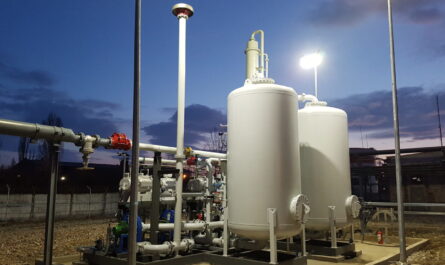What are Gas Springs?
Gas springs, also known as gas pressure springs, are piston-containing cylinders filled with compressed gas such as nitrogen that provide either reactive or supportive force depending on the direction of an applied force. They contain a piston attached to a rod that moves inside the sealed cylinder, pushing back against applied force due to the compressed gas.
Applications of Gas Springs
Gas springs have found usage in a wide variety of applications that require mechanisms or components to stay in position without external support. Some of their main applications include:
Carbonated Beverage Systems
Gas springs are used in all carbonated drink dispensers and soda fountains to keep the taps and nozzles positioned properly. The force of compressed CO2 gas inside balances the weight of tap components automatically.
Seating and Furniture
Comfort and ergonomic office chairs, reclining sofas and lounge furniture extensively use gas springs to counterbalance seat positioning adjustments. This allows smooth raising, lowering and tilting motions without additional effort.
Deck Lids and Hatches
Automotive deck lids, hoods, cargo hatches and rear gates are supported using gas springs. Their reactive force ensures stable positioning without hydraulic or electromechanical assistance.
Shelving and Storage Systems
Industrial shelving, racks, cabinets and movable storage systems rely on gas springs inside sliding components to keep drawers, flaps and sections open at any intermediate point.
Construction and Infrastructure
Scaffolding, concrete formwork, movable bridges and construction equipment integrate gas springs for height adjustments, tilting and locking mobility components and assemblies in place.
Advantages of Gas Springs
Relative to other spring technologies like coil springs, torsion springs and leaf springs, gas springs offer various operational advantages:
Precision Force Output
The force exerted by a gas spring remains consistent throughout its stroke due to the stable compressed gas inside. This enables precise positioning control.
Long Operational Life
With no moving metal parts subject to fatigue like coil springs, gas springs can last indefinitely through millions of cycles if not damaged.
Zero Maintenance
Once installed and sealed, gas springs do not require any servicing, re-charging or re-lubrication like hydraulic dampeners or shock absorbers.
Compact Size
High force output is achievable from very compact gas spring cylinders due to efficient use of pressurized gas volume. This aids integration into compact mechanisms.
Tunable Force-Stroke Behavior
Varying gas charge volume and cylinder dimensions allows tailoring the force-distance profile of a gas spring as per specific application needs.
Overload Protection
A built-in maximum extension stop protects the gas spring and mechanical components it interacts with from over-extension and subsequent damage.
Corrosion Resistance
Stainless steel or combination metal cylinder bodies resist corrosion better than other spring types prone to environmental degradation over time like coil springs.
Design and Construction of Gas Springs
All gas springs consist of a cylindrical tube or barrel closed at one end that acts as the pressure vessel. It contains compressed nitrogen that equally pressurizes the inside volume.
A piston with seals slides freely inside the barrel. It is attached to an extension rod protruding from the open end. As weight or force pushes the rod inwards, gas in front of the piston compresses while behind expands. This pushes back in equilibrium.
The inner barrel surface has minor circumferential grooves cut that allow controlled leakage of gas past the piston seals during extension stroke. ThisLeakage tuning allows customizing the force-displacement behavior as gas pressure on both sides equalizes gradually.
Summary
Precision positioning components across industries leverage the passive, maintenance-free force exertion capabilities of gas springs. Their reliability, longevity and force tuning flexibility have established gas springs as an essential enabling technology globally. Continuous engineering optimization further expands the scope and impact of this ingenious mechanical solution.
*Note:
- Source: Coherent Market Insights, Public sources, Desk research
- We have leveraged AI tools to mine information and compile it



